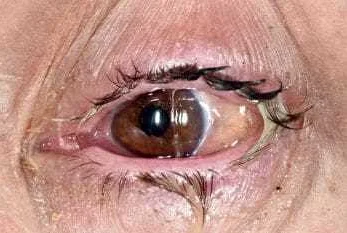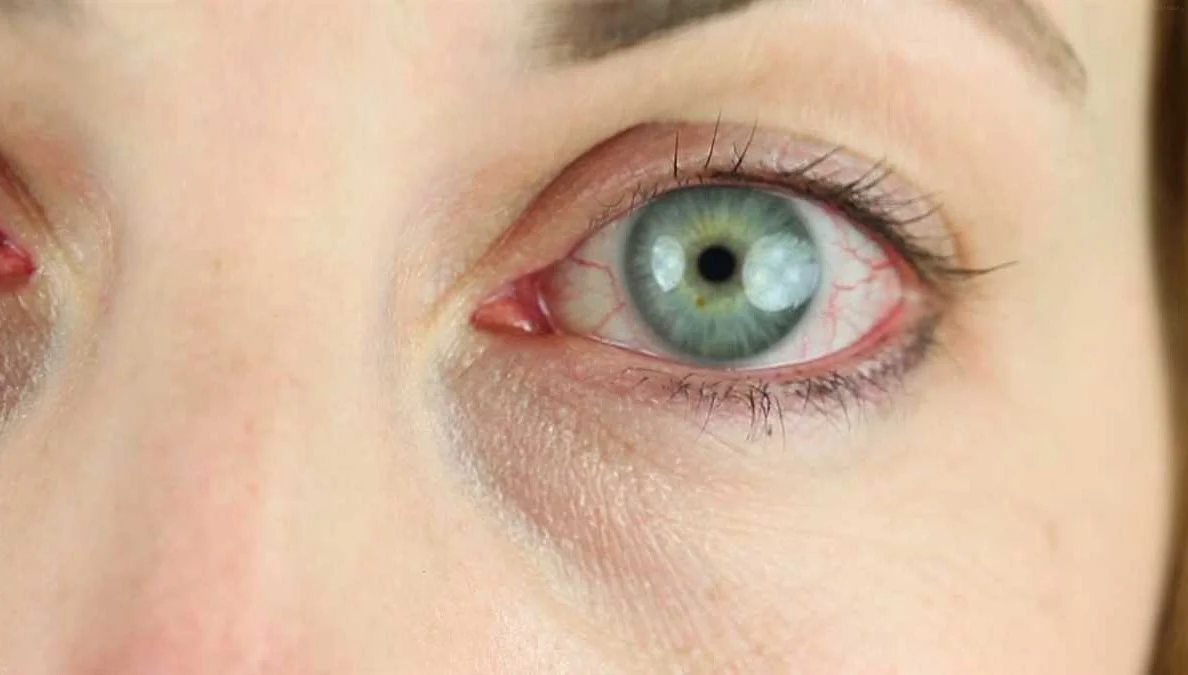Overview of Conjunctivitis
Содержимое
Learn about conjunctivitis, an inflammation of the conjunctiva, the thin, clear tissue that lines the white part of the eye and the inner surface of the eyelids. Find out about the causes, symptoms, and treatment options for conjunctivitis, also known as pink eye, including home remedies and when to see a doctor.
Conjunctivitis, also known as pink eye, is a common eye infection that can affect people of all ages. It is an inflammation of the conjunctiva, the thin and transparent membrane that covers the surface of the eye and the inner surface of the eyelids. Conjunctivitis can be caused by various factors, including viral or bacterial infections, allergies, or irritants.
The most common cause of conjunctivitis is a viral infection, which can be highly contagious and easily spread from person to person. Bacterial infections can also cause conjunctivitis, often resulting in a more severe form of the condition. Allergic conjunctivitis occurs when the conjunctiva becomes irritated by allergens such as pollen, dust mites, or pet dander. Irritant conjunctivitis, on the other hand, is caused by contact with substances like smoke, chemicals, or foreign bodies.
Conjunctivitis is characterized by a number of symptoms, including redness, itching, tearing, and a gritty sensation in the eyes. Other common symptoms may include discharge from the eyes, light sensitivity, and swollen eyelids. The severity of symptoms can vary depending on the underlying cause of conjunctivitis.
Treatment for conjunctivitis depends on the cause of the infection. Viral conjunctivitis typically resolves on its own within one to two weeks and does not require specific treatment. Bacterial conjunctivitis, on the other hand, is often treated with antibiotic eye drops or ointments to help clear the infection. Allergic conjunctivitis can be managed by avoiding allergens and using antihistamine eye drops to relieve symptoms. In cases of irritant conjunctivitis, rinsing the eyes with clean water and avoiding further contact with the irritant is usually sufficient.
It is important to seek medical attention if you suspect you have conjunctivitis, especially if the symptoms are severe or persist for more than a week. Your healthcare provider can diagnose the cause of conjunctivitis and recommend the appropriate treatment to help alleviate your symptoms and prevent the spread of infection.
Understanding Conjunctivitis: Definition and Types

Conjunctivitis, also known as pink eye, is an inflammation of the conjunctiva, which is the clear tissue that lines the white part of the eye and the inner surface of the eyelids. It is a common eye condition that can be caused by various factors.
There are different types of conjunctivitis, each with its own set of causes and symptoms. The three main types of conjunctivitis are:
- Viral Conjunctivitis: This type of conjunctivitis is caused by a viral infection, such as the common cold or the flu. It typically starts in one eye and can spread to the other. Symptoms include redness, watery eyes, itchiness, and sensitivity to light.
- Bacterial Conjunctivitis: Bacterial conjunctivitis is caused by bacteria, such as Staphylococcus aureus or Streptococcus pneumoniae. It can be spread through direct contact with an infected person or by touching contaminated surfaces. Symptoms include redness, eye discharge, crusty eyelids, and swollen eyelids.
- Allergic Conjunctivitis: This type of conjunctivitis is caused by an allergic reaction to substances such as pollen, dust mites, or pet dander. It can occur seasonally or year-round. Symptoms include redness, itching, burning, and watery discharge.
It is important to note that conjunctivitis can also be caused by other factors, such as irritants like smoke or chemicals, or by certain medical conditions.
If you experience symptoms of conjunctivitis, it is recommended to consult with an eye care professional for an accurate diagnosis and appropriate treatment.
Causes of Conjunctivitis: Allergies, Infections, and Irritants

Conjunctivitis, also known as pink eye, is a common condition characterized by inflammation of the conjunctiva, the thin clear tissue that covers the white part of the eye and lines the inner surface of the eyelids. This condition can be caused by various factors, including allergies, infections, and irritants.
Allergic conjunctivitis occurs when the conjunctiva becomes irritated or inflamed in response to allergens such as pollen, pet dander, dust mites, or certain medications. This type of conjunctivitis is often accompanied by other allergy symptoms, such as sneezing, runny nose, and itching. Avoiding exposure to the allergens and using antihistamine eye drops can help alleviate symptoms.
Infectious conjunctivitis is caused by a viral or bacterial infection. Viral conjunctivitis is highly contagious and can be spread through contact with infected tears or surfaces. It is often associated with respiratory infections, such as the common cold. Bacterial conjunctivitis is usually caused by bacteria such as Staphylococcus or Streptococcus and can result from poor hygiene or contact with contaminated objects. Antibiotic eye drops or ointments are typically prescribed to treat bacterial conjunctivitis.
Irritant conjunctivitis occurs when the conjunctiva is exposed to irritants such as chemicals, smoke, chlorine in swimming pools, or foreign bodies like dust or sand. This type of conjunctivitis can cause redness, burning, and watering of the eyes. Avoiding the irritants and rinsing the eyes with clean water can help relieve symptoms.
| Allergies | Sneezing, itching, redness | Antihistamine eye drops |
| Infections | Watery discharge, redness | Antibiotic eye drops or ointments |
| Irritants | Redness, burning, watering | Rinsing with clean water |
Identifying Conjunctivitis: Common Symptoms and Signs
Conjunctivitis, also known as pink eye, is a common eye infection that causes inflammation of the conjunctiva. This condition can affect people of all ages and is highly contagious. If you suspect you or someone you know may have conjunctivitis, it is important to be aware of the common symptoms and signs to seek appropriate treatment.
One of the most obvious signs of conjunctivitis is redness in the eyes. The blood vessels in the conjunctiva become swollen and turn the whites of the eyes pink or red. This redness can vary in severity, from a slight tinge to a deep, vibrant red. It is important to note that red eyes can also be a symptom of other eye conditions, so additional symptoms should be considered.
Another common symptom of conjunctivitis is itching. The infected eye or eyes may feel itchy and irritated. This itching can be mild to severe and can cause discomfort and a constant urge to rub the eyes. However, rubbing the eyes can further irritate the condition and potentially spread the infection to other areas.
Watery eyes are also a telltale sign of conjunctivitis. The eyes may produce excessive tears, making them appear watery and constantly teary. This is the body’s way of trying to flush out the infection or irritants causing the inflammation. The watery discharge may be clear or slightly thick, depending on the type and severity of conjunctivitis.
In addition to redness, itching, and watery eyes, conjunctivitis can also cause a sticky or crusty discharge. This discharge, known as pus, can accumulate in the corner of the eyes or along the eyelashes. It may be yellow, green, or white in color and can make it difficult to open the eyes after sleep. Cleaning the eyes with warm water or saline solution can provide temporary relief.
Some individuals with conjunctivitis may experience a gritty or sandy sensation in the eyes. This sensation is often described as feeling like there is something foreign or abrasive in the eye. It can cause discomfort and may worsen when blinking or rubbing the eyes. It is important to avoid rubbing or touching the eyes to prevent further irritation or potential spread of the infection.
If you or someone you know is experiencing any of these common symptoms and signs of conjunctivitis, it is essential to seek medical attention. A healthcare professional can properly diagnose the condition and recommend appropriate treatment options, such as antibiotic eye drops, antihistamines, or cold compresses. Timely treatment can help alleviate symptoms and prevent the spread of conjunctivitis to others.
Diagnostic Methods for Conjunctivitis: Tests and Examinations

Conjunctivitis, also known as pink eye, is a common eye condition characterized by inflammation of the conjunctiva, the thin membrane that covers the whites of the eyes and lines the inner surface of the eyelids. It can be caused by various factors, including viral or bacterial infections, allergies, and irritants.
When diagnosing conjunctivitis, healthcare professionals may use several tests and examinations to determine the cause and severity of the condition. These diagnostic methods help in selecting the appropriate treatment and preventing the spread of the infection.
| Visual examination | The healthcare professional visually inspects the eyes to check for redness, swelling, discharge, and other signs of conjunctivitis. |
| Medical history | The healthcare professional asks about the patient’s symptoms, duration of symptoms, previous episodes of conjunctivitis, and any known allergies or other medical conditions. |
| Swab culture | A swab is taken from the conjunctiva or discharge and sent to a laboratory for testing to identify the presence of bacteria or viruses. |
| Allergy testing | If allergies are suspected as the cause of conjunctivitis, the healthcare professional may perform allergy tests to identify specific allergens. |
| Fluorescein staining | A dye called fluorescein is applied to the eye to detect any corneal damage or ulcers that may be present. |
It is important to accurately diagnose conjunctivitis to ensure appropriate treatment and prevent complications. In some cases, further tests or consultations with specialists may be required to determine the underlying cause or rule out other eye conditions.